Jiao Liu
($\boldsymbolθ_l, \boldsymbolθ_u$)-Parametric Multi-Task Optimization: Joint Search in Solution and Infinite Task Spaces
Mar 11, 2025Abstract:Multi-task optimization is typically characterized by a fixed and finite set of optimization tasks. The present paper relaxes this condition by considering a non-fixed and potentially infinite set of optimization tasks defined in a parameterized, continuous and bounded task space. We refer to this unique problem setting as parametric multi-task optimization (PMTO). Assuming the bounds of the task parameters to be ($\boldsymbol{\theta}_l$, $\boldsymbol{\theta}_u$), a novel ($\boldsymbol{\theta}_l$, $\boldsymbol{\theta}_u$)-PMTO algorithm is crafted to enable joint search over tasks and their solutions. This joint search is supported by two approximation models: (1) for mapping solutions to the objective spaces of all tasks, which provably accelerates convergence by acting as a conduit for inter-task knowledge transfers, and (2) for probabilistically mapping tasks to the solution space, which facilitates evolutionary exploration of under-explored regions of the task space. At the end of a full ($\boldsymbol{\theta}_l$, $\boldsymbol{\theta}_u$)-PMTO run, the acquired models enable rapid identification of optimized solutions for any task lying within the specified bounds. This outcome is validated on both synthetic test problems and practical case studies, with the significant real-world applicability of PMTO shown towards fast reconfiguration of robot controllers under changing task conditions. The potential of PMTO to vastly speedup the search for solutions to minimax optimization problems is also demonstrated through an example in robust engineering design.
Gungnir: Exploiting Stylistic Features in Images for Backdoor Attacks on Diffusion Models
Feb 28, 2025Abstract:In recent years, Diffusion Models (DMs) have demonstrated significant advances in the field of image generation. However, according to current research, DMs are vulnerable to backdoor attacks, which allow attackers to control the model's output by inputting data containing covert triggers, such as a specific patch or phrase. Existing defense strategies are well equipped to thwart such attacks through backdoor detection and trigger inversion because previous attack methods are constrained by limited input spaces and triggers defined by low-dimensional features. To bridge these gaps, we propose Gungnir, a novel method that enables attackers to activate the backdoor in DMs through hidden style triggers within input images. Our approach proposes using stylistic features as triggers for the first time and implements backdoor attacks successfully in image2image tasks by utilizing Reconstructing-Adversarial Noise (RAN) and Short-Term-Timesteps-Retention (STTR) of DMs. Meanwhile, experiments demonstrate that our method can easily bypass existing defense methods. Among existing DM main backdoor defense frameworks, our approach achieves a 0\% backdoor detection rate (BDR). Our codes are available at https://github.com/paoche11/Gungnir.
Physics-Informed Neuro-Evolution (PINE): A Survey and Prospects
Jan 11, 2025Abstract:Deep learning models trained on finite data lack a complete understanding of the physical world. On the other hand, physics-informed neural networks (PINNs) are infused with such knowledge through the incorporation of mathematically expressible laws of nature into their training loss function. By complying with physical laws, PINNs provide advantages over purely data-driven models in limited-data regimes. This feature has propelled them to the forefront of scientific machine learning, a domain characterized by scarce and costly data. However, the vision of accurate physics-informed learning comes with significant challenges. This review examines PINNs for the first time in terms of model optimization and generalization, shedding light on the need for new algorithmic advances to overcome issues pertaining to the training speed, precision, and generalizability of today's PINN models. Of particular interest are the gradient-free methods of neuroevolution for optimizing the uniquely complex loss landscapes arising in PINN training. Methods synergizing gradient descent and neuroevolution for discovering bespoke neural architectures and balancing multiple conflicting terms in physics-informed learning objectives are positioned as important avenues for future research. Yet another exciting track is to cast neuroevolution as a meta-learner of generalizable PINN models.
Language Model Evolutionary Algorithms for Recommender Systems: Benchmarks and Algorithm Comparisons
Nov 16, 2024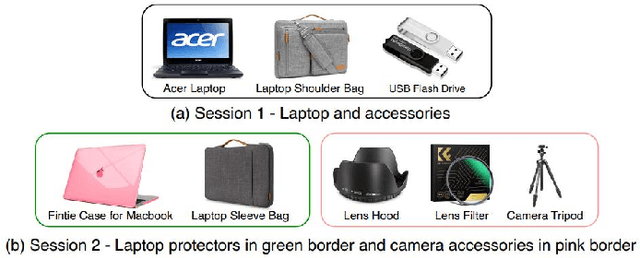
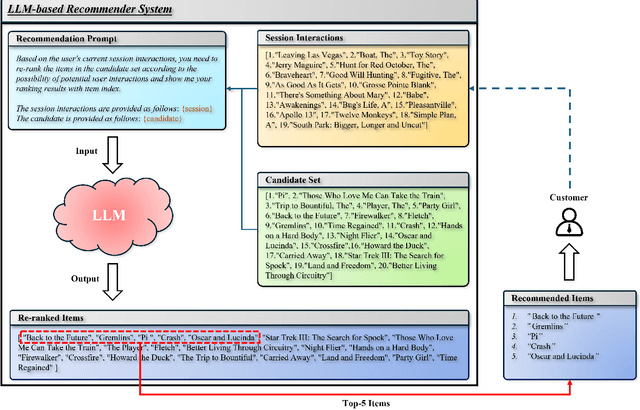

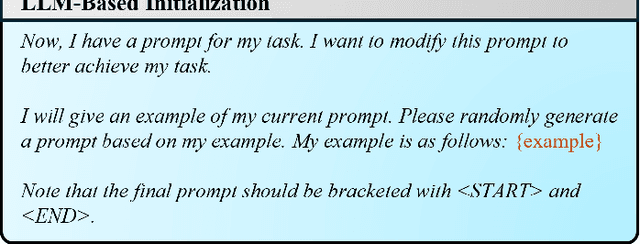
Abstract:In the evolutionary computing community, the remarkable language-handling capabilities and reasoning power of large language models (LLMs) have significantly enhanced the functionality of evolutionary algorithms (EAs), enabling them to tackle optimization problems involving structured language or program code. Although this field is still in its early stages, its impressive potential has led to the development of various LLM-based EAs. To effectively evaluate the performance and practical applicability of these LLM-based EAs, benchmarks with real-world relevance are essential. In this paper, we focus on LLM-based recommender systems (RSs) and introduce a benchmark problem set, named RSBench, specifically designed to assess the performance of LLM-based EAs in recommendation prompt optimization. RSBench emphasizes session-based recommendations, aiming to discover a set of Pareto optimal prompts that guide the recommendation process, providing accurate, diverse, and fair recommendations. We develop three LLM-based EAs based on established EA frameworks and experimentally evaluate their performance using RSBench. Our study offers valuable insights into the application of EAs in LLM-based RSs. Additionally, we explore key components that may influence the overall performance of the RS, providing meaningful guidance for future research on the development of LLM-based EAs in RSs.
LLM2FEA: Discover Novel Designs with Generative Evolutionary Multitasking
Jun 21, 2024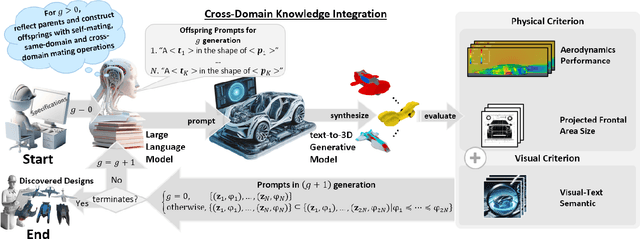
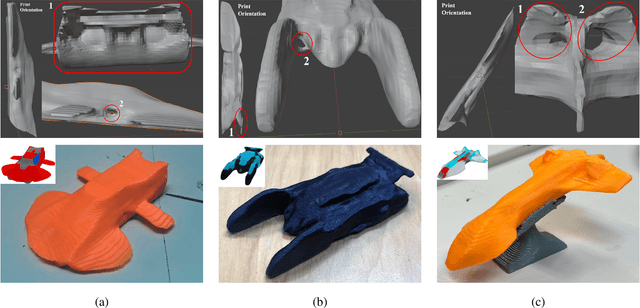
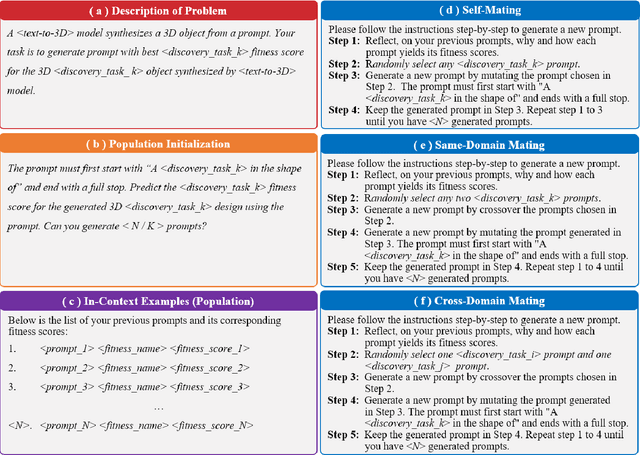
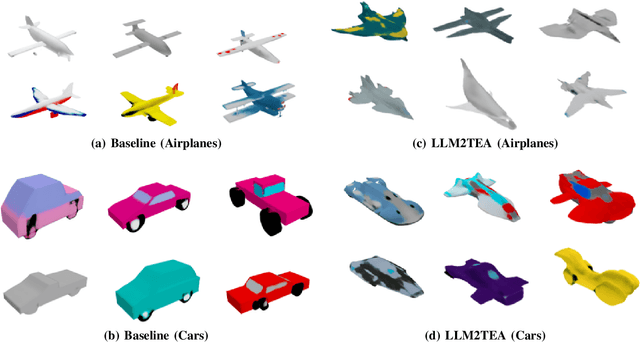
Abstract:The rapid research and development of generative artificial intelligence has enabled the generation of high-quality images, text, and 3D models from text prompts. This advancement impels an inquiry into whether these models can be leveraged to create digital artifacts for both creative and engineering applications. Drawing on innovative designs from other domains may be one answer to this question, much like the historical practice of ``bionics", where humans have sought inspiration from nature's exemplary designs. This raises the intriguing possibility of using generative models to simultaneously tackle design tasks across multiple domains, facilitating cross-domain learning and resulting in a series of innovative design solutions. In this paper, we propose LLM2FEA as the first attempt to discover novel designs in generative models by transferring knowledge across multiple domains. By utilizing a multi-factorial evolutionary algorithm (MFEA) to drive a large language model, LLM2FEA integrates knowledge from various fields to generate prompts that guide the generative model in discovering novel and practical objects. Experimental results in the context of 3D aerodynamic design verify the discovery capabilities of the proposed LLM2FEA. The designs generated by LLM2FEA not only satisfy practicality requirements to a certain degree but also feature novel and aesthetically pleasing shapes, demonstrating the potential applications of LLM2FEA in discovery tasks.
Precise-Physics Driven Text-to-3D Generation
Mar 19, 2024Abstract:Text-to-3D generation has shown great promise in generating novel 3D content based on given text prompts. However, existing generative methods mostly focus on geometric or visual plausibility while ignoring precise physics perception for the generated 3D shapes. This greatly hinders the practicality of generated 3D shapes in real-world applications. In this work, we propose Phy3DGen, a precise-physics-driven text-to-3D generation method. By analyzing the solid mechanics of generated 3D shapes, we reveal that the 3D shapes generated by existing text-to-3D generation methods are impractical for real-world applications as the generated 3D shapes do not conform to the laws of physics. To this end, we leverage 3D diffusion models to provide 3D shape priors and design a data-driven differentiable physics layer to optimize 3D shape priors with solid mechanics. This allows us to optimize geometry efficiently and learn precise physics information about 3D shapes at the same time. Experimental results demonstrate that our method can consider both geometric plausibility and precise physics perception, further bridging 3D virtual modeling and precise physical worlds.
Inverse Transfer Multiobjective Optimization
Dec 26, 2023



Abstract:Transfer optimization enables data-efficient optimization of a target task by leveraging experiential priors from related source tasks. This is especially useful in multiobjective optimization settings where a set of trade-off solutions is sought under tight evaluation budgets. In this paper, we introduce a novel concept of inverse transfer in multiobjective optimization. Inverse transfer stands out by employing probabilistic inverse models to map performance vectors in the objective space to population search distributions in task-specific decision space, facilitating knowledge transfer through objective space unification. Building upon this idea, we introduce the first Inverse Transfer Multiobjective Evolutionary Optimizer (invTrEMO). A key highlight of invTrEMO is its ability to harness the common objective functions prevalent in many application areas, even when decision spaces do not precisely align between tasks. This allows invTrEMO to uniquely and effectively utilize information from heterogeneous source tasks as well. Furthermore, invTrEMO yields high-precision inverse models as a significant byproduct, enabling the generation of tailored solutions on-demand based on user preferences. Empirical studies on multi- and many-objective benchmark problems, as well as a practical case study, showcase the faster convergence rate and modelling accuracy of the invTrEMO relative to state-of-the-art evolutionary and Bayesian optimization algorithms. The source code of the invTrEMO is made available at https://github.com/LiuJ-2023/invTrEMO.
CS-PCN: Context-Space Progressive Collaborative Network for Image Denoising
May 17, 2023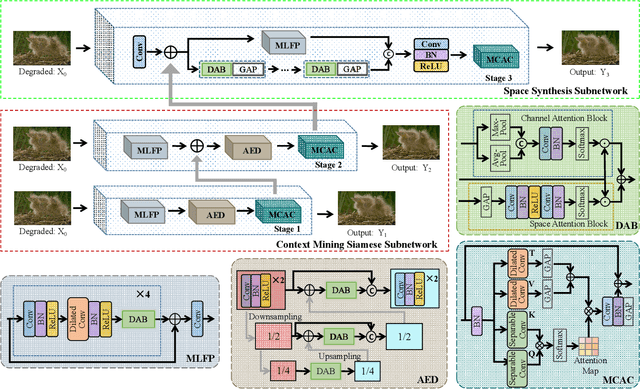

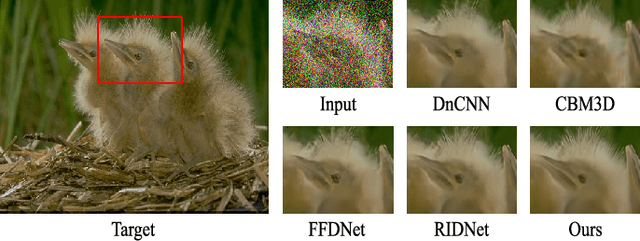
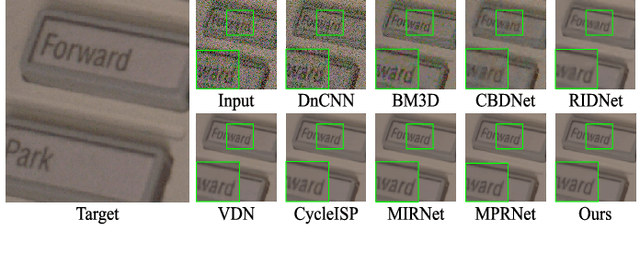
Abstract:Currently, image-denoising methods based on deep learning cannot adequately reconcile contextual semantic information and spatial details. To take these information optimizations into consideration, in this paper, we propose a Context-Space Progressive Collaborative Network (CS-PCN) for image denoising. CS-PCN is a multi-stage hierarchical architecture composed of a context mining siamese sub-network (CM2S) and a space synthesis sub-network (3S). CM2S aims at extracting rich multi-scale contextual information by sequentially connecting multi-layer feature processors (MLFP) for semantic information pre-processing, attention encoder-decoders (AED) for multi-scale information, and multi-conv attention controllers (MCAC) for supervised feature fusion. 3S parallels MLFP and a single-scale cascading block to learn image details, which not only maintains the contextual information but also emphasizes the complementary spatial ones. Experimental results show that CS-PCN achieves significant performance improvement in synthetic and real-world noise removal.
 Add to Chrome
Add to Chrome Add to Firefox
Add to Firefox Add to Edge
Add to Edge